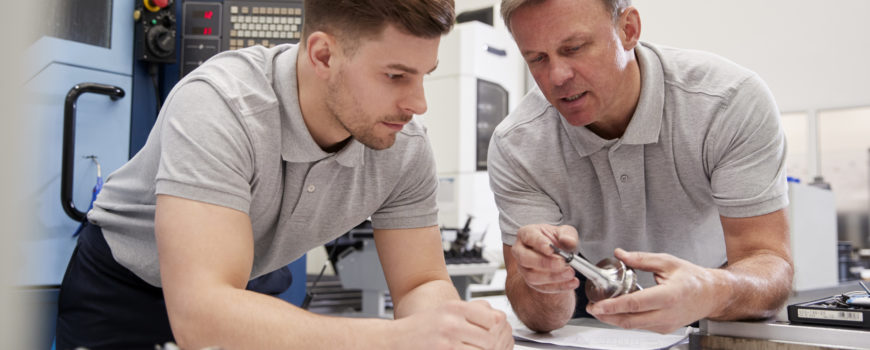Over the years, human activity, in particular, manufacturing has had a devastating effect on the environment due to pollution. It has also drained the available natural resources through wastage and bad manufacturing practices. In the recent past, there has been a push for green manufacturing prices along with other green practices. Here are five things that you need to know about green manufacturing and how they apply in your custom machine shop or OEM manufacturing facility.
Green manufacturing comes in two ways
Green manufacturing can be defined in two major ways. First, the production of green products. These are products that do not degrade the environment. They may be fully functional equipment or parts thereof which ensure a clean and green environment. Second, it involves the use of renewable energy and manufacturing practices that do not pollute the environment.
Green products can be achieved in many ways. First, the selection of the materials used in the manufacture is critical to ensure that they are materials that do not contribute to environmental degradation. You can use recyclable or recycled materials in support to the recycling initiative. The plastic menace around the world and lead poisoning are some common manufacturing challenges that can be dealt by either of these two approaches.
The use of renewable energy sources helps avoid over-dependence on fossil fuels which are rapidly declining over the years. Renewable energy also brings down the cost of powering up the manufacturing facilities. Renewable energy sources include wind energy and solar power.
Reducing resource use
Different natural resources are dwindling as the years go by. Metal ores, oil, and water are some of the rapidly dwindling resources of importance to the manufacturing community. With the green manufacturing effort, there is an emphasis on the reduction of waste as a way to stem the draining of the resources. Wastage reduction involves streamlining manufacturing process to create efficiency so that every resource that gets into the production cycle is put into use.These resources include raw materials and energy
The second approach involves recycling the used and left-over materials for use in production. In the process of manufacturing, cut metal pieces can be remelted and made into parts. The manufacturing facility can also work with recycling institution to get quality metal for the production. You can have pure and high metal quality for your machine shop from the recycled parts.
Besides, there are lots of resources such as water that can be reused at the manufacturing facility to reduce water consumption. With water purification systems, grey water can serve many other areas of the facility. The water should be treated as it leaves the facility to get rid of heavy metals such as iron and lead before joining the public sewerage systems.
Dealing with emissions
Emissions have been the greatest threat to a clean and sustainable environment. The use of fossil fuels over the years have deeply damaged the ozone layer, led to global warming and lowered the quality of breathable air around the industrial quarters. There has been a drive to reduce the use of fossil fuels which in turn helps reduce the carbon footprint from manufacturing companies.
The reduction in emission is achieved in a number of ways. The first common way is the use of renewable energy sources. Sometimes it takes the redesign of the common systems to use the renewable sources of energy. The second methods involve the restructuring the production methods to cut out some process that increases the production of greenhouse gases. The rapid development of technologies such as CAD, prototype modeling technologies, and precision manufacturing has simplified most technical processes thereby lowering the amount of emissions that leave the manufacturing facility.
Work with communities to improve the livelihoods and environment
The corporate social responsibility (CSR) is a crucial component of green manufacturing. The manufacturing facilities operate among communities. These communities provide the facility with the workforce, energy, and materials for the manufacturing procedures. The manufacturing organizations are bound to give back to the communities around them in a number of ways as explained below.
They can take initiatives to conserve resources such as water by helping in the planting of trees and building of dams.They can assist members of the community to improve their lives by instituting community-based projects such as research and design facilities, taking part in the production of renewable energy or supporting the needy students to get education.
Taking responsibility for any environmental degradation that may have happened in the past, such as pollution of land and rivers and taking the first step in cleaning up the mess.CSR ensures that the facility is part of the community, and its presence in the community becomes an asset to thousands living near it. It is vital that businesses join forces with bodies working towards improving the lives of the residents and the environment around them.
Business process improvement
Also called cradle-to-cradle manufacturing, the ecological business process improvement involves design, production, and manufacturing with an eye on reducing wastage, pollution and enhancing effective resource use. The manufacturing process consists of a lot of components as explained below. The processes cannot be said to be truly green if each of the components is not green. Work with the CNC machinist to redesign the components of the manufacturing process with a view of making them green. The components include:
1. Sustainable manufacturing
This involves manufacturing that does not exceed the environment’s ability to transform the waste into resources and nutrients. This manufacturing philosophy aims to ensure that the manufacturing does not lay the environment around is desolate due to draining and waste dumping.
2. Green operations
Green operations seek to strike a balance between pollution reduction and financial performance of the organization. It looks at such initiatives such as eco-design, re-use of old and worn-out components, refurbishment and eco-packaging of products. These products reduce environmental pollution while still ensuring that the business stays afloat.
3. Green supply chain management
The whole supply chain should adopt green practices in the production, packaging and supplying of parts and finished products. Consider purchasing raw materials and your CNC machine components from an original equipment manufacturer and Denver manufacturing company that is eco-sustainable. In the same breath, the company can recover the products that have reached their end of life for recycling.
Green manufacturing has long-term benefits on your CNC manufacturing process and the community surrounding the facility. Select a green machine shop Denver for your part supplies in support for the green manufacturing initiative.



